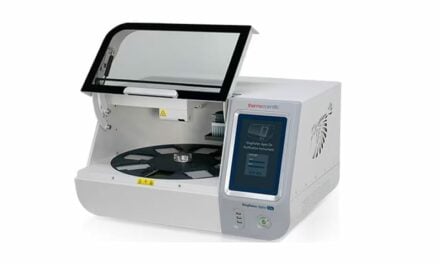New data from a meta-analysis of existing literature published today in CHEST, the official journal of the American College of Chest Physicians, demonstrate that Interferon Gamma Release Assays (IGRAs) are superior to the previous standard in diagnostics, the 100+-year-old tuberculin skin test (TST), for detecting confirmed active Tuberculosis (TB) disease.
This was especially true when the IGRAs, both QuantiFERON®-TB Gold (QFT), which is manufactured by Cellestis Limited, as well as the T-SPOT®-TB (T-Spot), were administered in developed countries.
In the United States, TB remains a public health threat, with as many as 14 million Americans infected with TB bacteria. At any given time, members from this large pool of infected people can develop full-blown, highly contagious TB. This new meta-analysis provides further evidence supporting a new, scientifically-proven standard for detecting tuberculosis infection.
"Tuberculosis remains a global public health threat and as such, should be regarded with a corresponding level of urgency," said lead study author Roland Diel, MD, MPH, Assistant Professor, Department of Pulmonary Medicine, Medical School (MHH) Hannover. "The study results support IGRAs as modern advances in diagnosing a very old disease that is just as significant today as it was in the 1700s."
The authors critically reviewed and analyzed 124 studies investigating the commercial QFT and T-Spot blood tests and TST for sensitivity (the percentage of infected persons who return a positive test result) in confirmed active TB cases and specificity (the percentage of uninfected persons who return a negative test result) in individuals with no risk factors for infection. Researchers found that the newer blood tests provide significant improvements in sensitivity over TST. The authors reviewed studies from developed countries and found the TST had only 71.5% sensitivity compared with QFT at 84.5% and the T-Spot at 88.5%.
In a country with a relatively low rate of TB disease, such as the US, specificity is more important because poor specificity leads to greater numbers of false positives. QFT is highly specific at 99.2% versus 86.3% for T-Spot. By comparison, TST specificity may be as low as 59% in persons who are BCG-vaccinated and only 97% in non-vaccinated populations. To highlight the importance of specificity in low prevalence settings, in testing 1,000 persons without TB, the TST would return between 30 and 410 false-positives, T-Spot would return 157 false-positive test results; QFT only eight.
"In addition to aiding the prevention of future outbreaks, improved tuberculosis diagnostics reduce the costs associated with TB control," said Tony Radford, Chief Executive Officer, Cellestis Limited. "With QFT virtually eliminating false-positive readings that are common with TST, TB control and treatment can now be more accurately targeted to those persons who truly are infected, minimizing unnecessary further testing and treatment."
Source: Cellestis Limited




